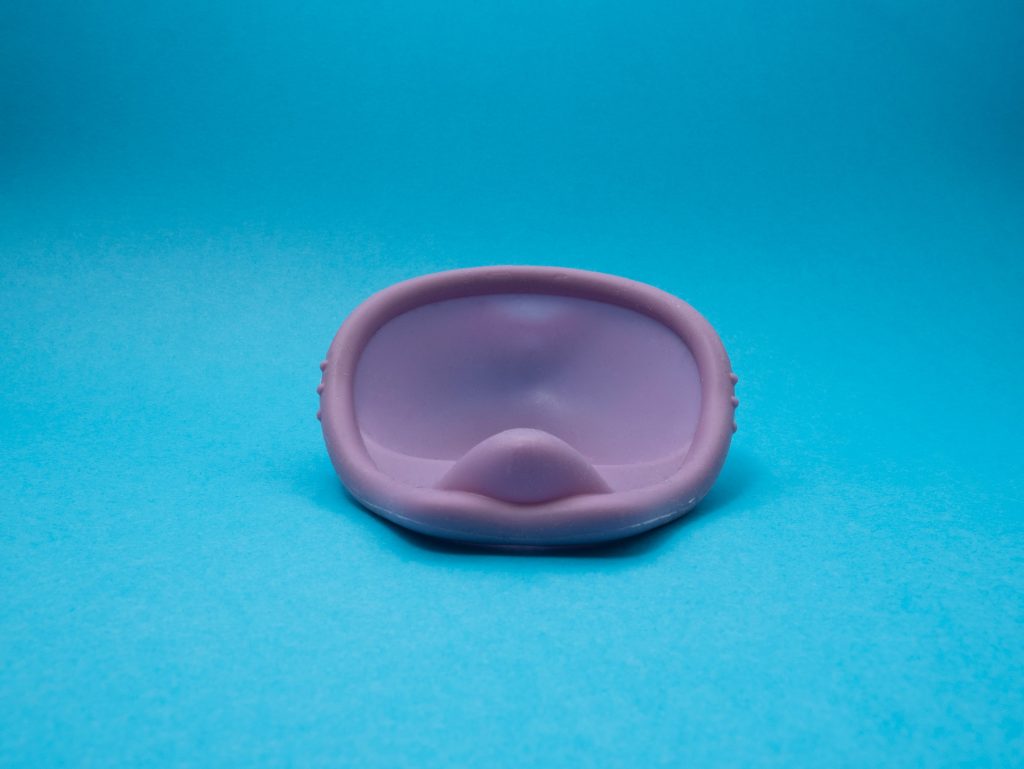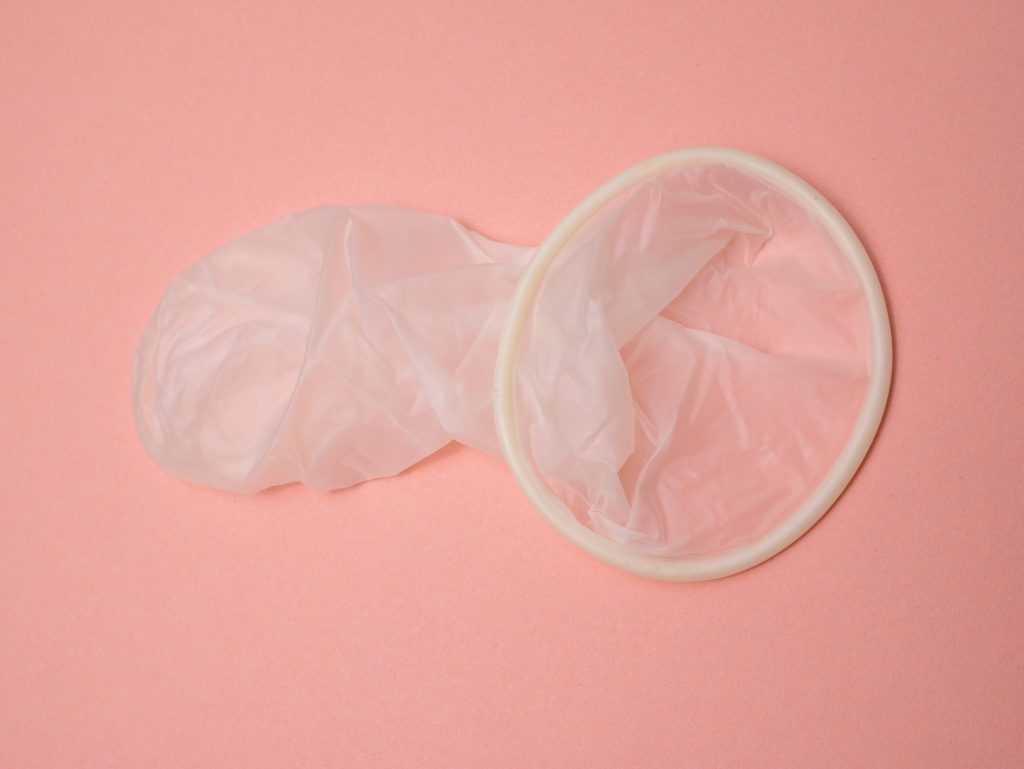
Table of Contents
What Are Spermicides?

Spermicide is a substance that kills sperm on contact. Spermicides are available in a variety of different forms including creams, gels, foams, suppositories and films.1 Spermicides are inserted deep into the vagina, near the cervix, with a plastic syringe applicator, or they are inserted with a diaphragm, cervical cap, or contraceptive sponge.3 Spermicides contain the chemical nonoxynyl-9, a surfactant that destroys the cell membrane of the sperm, rendering it immobile.2 They create a barrier blocking the cervix, so the sperm cannot reach the egg.3 Spermicides can be used alone or in conjunction with another birth control method. They are always used with a diaphragm, cervical cap, or contraceptive sponge.1
Effectiveness
Spermicides are not very effective when used alone. When used consistently and correctly, spermicides prevent pregnancy 85% of the time.1 In reality, when used by the general population, spermicides prevent pregnancy 71% of the time.1 Spermicides should be used in conjunction with a hormonal or barrier method of birth control to effectively prevent pregnancy. Hormonal methods include the birth control pill, intrauterine device (IUD), the implant, the patch, or the birth control shot. Barrier methods include the male or female condom, the diaphragm, the cervical cap, or the contraceptive sponge.
Many types of condoms are lubricated with spermicidal lubricants for extra protection.4 Many brands of personal lubricants also contain spermicide.4 It is important to note that personal lubricants are not intended to prevent pregnancy or the spread of sexually transmitted infections (STIs). When using a personal lubricant, it is necessary to also use a male or female condom to prevent pregnancy and the spread of STIs.
Cost
In the United States, spermicides are available at Planned Parenthood and other family planning clinics, drug stores, and some supermarkets without a prescription.1 Applicator kits and foams/gels cost about $8 and refills cost about $4-$8. Large cans of foam contain between 20 and 40 applications. Film and suppositories can be purchased for approximately $13 to $18.7,8
Types of Spermicides
Instructions on how to use spermicides might vary depending on the type or brand. Before using a spermicide, thoroughly review the instructions included in the packaging.
Foams, Gels, or Creams
These spermicides are inserted deep into the vagina using a syringe applicator, a finger, or by applying it to a diaphragm, contraceptive sponge, or cervical cap which are then placed over the cervix.1 The spermicide should be inserted 10 to15 minutes prior to intercourse and left in for six to eight hours after intercourse.1 If it is washed out too soon, there is a possibility that not all sperm were killed which increases the risk of pregnancy.5 More spermicide must be inserted before each act of intercourse and after every ejaculation.1
When using a diaphragm or cervical cap, place about one tablespoon of spermicide into the cup before inserting. Be sure to follow your healthcare provider’s instructions when using a diaphragm or cervical cap. The diagram on the left shows how to put spermicide into a diaphragm. The diagram below shows how spermicide is insert into the vagina with an applicator.
The diagram below shows how spermicide is inserted into the vagina using a plastic syringe applicator.
Suppositories
A spermicidal suppository is a small, round capsule that is inserted deep into the vagina with a finger. It takes approximately 10 to 15 minutes for the suppository to dissolve and become effective. A suppository loses its effectiveness if left in longer than one hour before intercourse.6 To make insertion easier, it may be helpful to wet or lubricate the suppository before insertion.
Spermicidal Film (Vaginal Contraceptive Film)
Vaginal contraceptive film (VCF) is a small square of clear film that is inserted deep ino the vagina with a finger. Once inside, the film will dissolve into a spermicidal gel in approximately 15 minutes.7 The film should be inserted about 15 minutes before intercourse and it loses effectiveness about three hours after insertion.7
Advantages of Using Spermicides
Spermicide is easy to use and convenient to acquire. It is non-hormonal so it will not interfere with a female’s hormone cycle. Females who do not wish to take hormonal birth control can use spermicide to prevent pregnancy.1,5 Spermicide can be used in conjunction with a barrier method of birth control and/or a hormonal method of birth control without interfering with their effectiveness for added protection.1,5,8 It is very accessible — it can be purchased for a relatively low cost at many drug stores or supermarkets without a prescription.1,8 Spermicide is easily carried in a pocket or purse.1 It is easily reversible — spermicide does not have any effect on the female’s reproductive cycle so she may become pregnant immediately after stopping use of spermicides.8
Disadvantages of Using Spermicides

There are several disadvantages to using spermicides. Spermicide must be used in conjunction with another birth control method to avoid high risk of pregnancy.1,8 The chemicals in spermicides may irritate the penis or vagina.1 There is an increased risk of vaginal irritation, yeast infections, bacterial vaginosis, and urinary tract infections (UTIs) with frequent use.3 If irritation occurs, stop use immediately. If irritation persists, consult your doctor.
Spermicides provide no protection against the spread of sexually transmitted infections (STIs). A male or female condom must be used to prevent the spread of STIs.1 Research has found that spermicides containing the chemical nonoxynol-9 may increase the risk of contracting HIV.9 This chemical can irritate the vaginal walls which makes the tissue susceptible to small tears. Tears in the vaginal wall increase the risk for infection to spread into the bloodstream. Spermicide use is not recommended for females who are at high risk for contracting HIV.9
Concluding Remarks

While using spermicides has some advantages, they are not the most effective way to prevent pregnancy. To provide maximum protection against pregnancy and the spread of STIs, all of us here at SexInfo recommend the use of one barrier method of birth control (e.g., the male or female condom) in conjunction with a hormonal method (e.g., the birth control pill, intrauterine device (IUD), or Depo-Provera (“the shot”)). To see how other birth control methods compare, see our Birth Control Comparison Chart.
References
- “Spermicides.” PlannedParenthood.org. Planned Parenthood Federation of America, Inc. n.d. Web. 26 Feb. 2017.
- Erne, R. and H. Porte. “Efficacy of Spermicides.” Contracept Fertil Sex (Paris) 19.4. Apr. 1991. Web. 26 Feb. 2017.
- “Spermicides.” ARHP.org. Association of Reproductive Health Professionals. June 2014. Web. 26 Feb. 2017.
- “How Does the Spermicidal Lube Work.” Condom-Sizes.org. Condom-Sizes.org. n.d. Web. 26 Feb. 2017.
- “Spermicides.” OptionsForSexualHealth.org. OPT: Options for Sexual Health. n.d. Web. 26 Feb. 2017.
- “Spermicide (Vaginal Route).” MayoClinic.org. Mayo Clinic. 01 April 2015. Web. 26 Feb. 2017.
- “Vaginal Contraceptive Film (VCF).” TeenHealthSource.com. Teen Health Source. n.d. Web. 26 Feb. 2017.
- “Spermicide.” AmericanPregnancy.org. American Pregnancy Association. 2 Sept. 2016. Web. 26 Feb. 2017.
- Farley, Tim and Christopher Powell. “Nonoxynol-9 ineffective in preventing HIV infection.” WHO.int. World Health Organization. n.d. Web. 26 Feb. 2017.
Last Updated: 13 April 2017.
